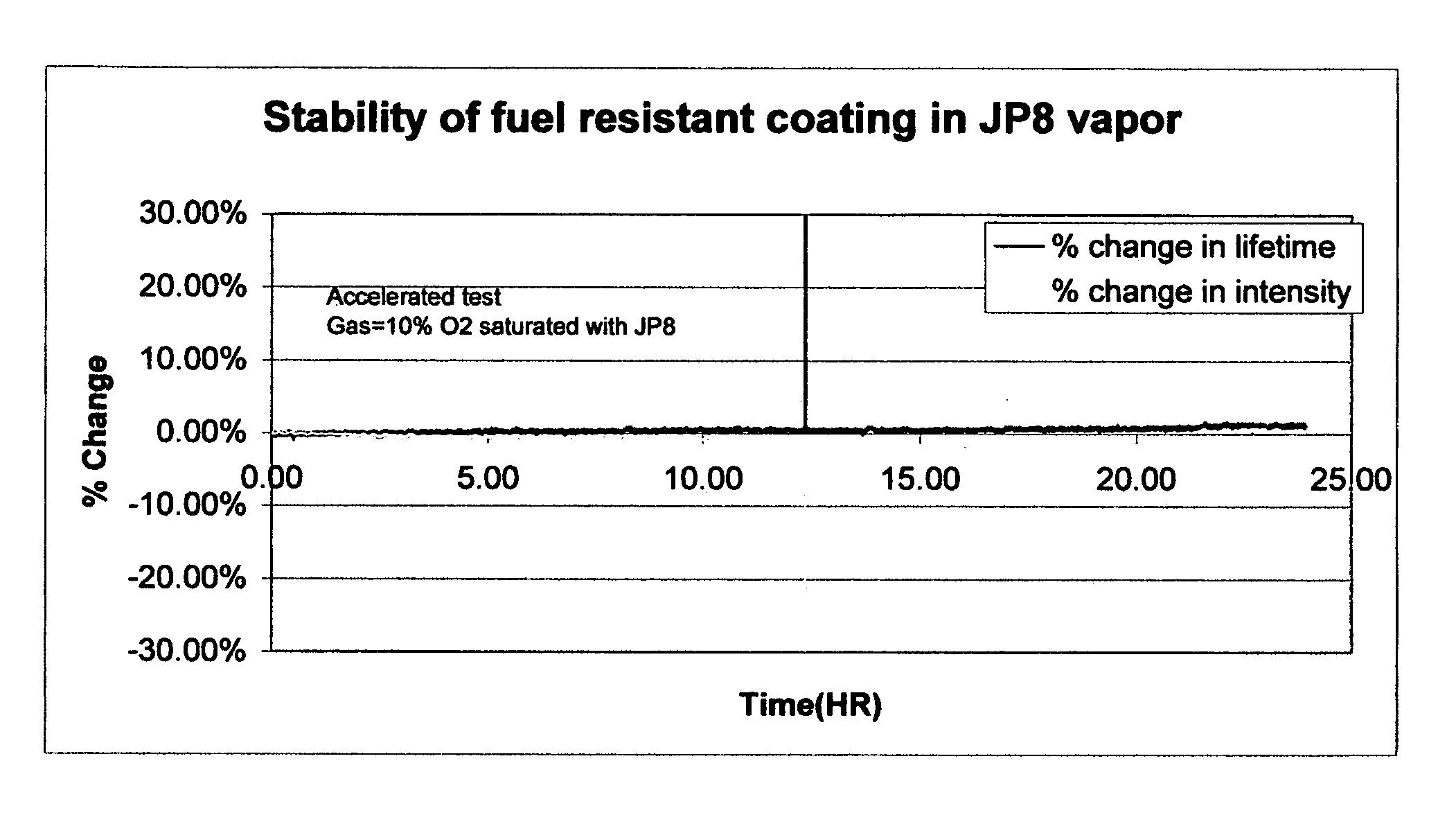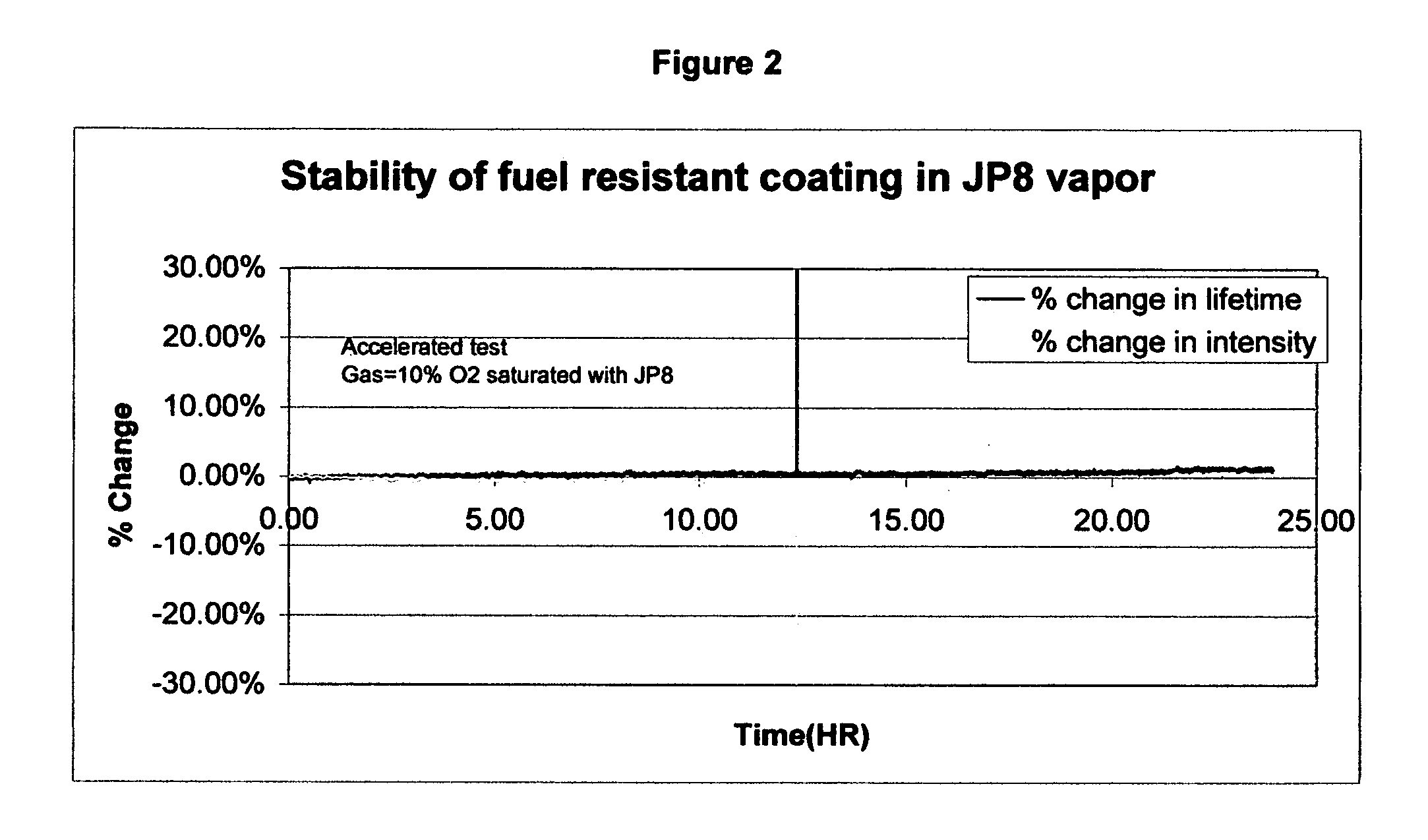High performance materials for optical sensors for hydrocarbons environment
a technology of optical sensors and hydrocarbons, applied in the field of high-performance materials for hydrocarbon environment optical sensors, can solve the problems of severe photo bleaching, inconvenient hydrocarbon environment standard sol-gel mediums used in optical sensors, etc., and achieve the effects of preventing leaching, accelerating photo bleaching, and preventing the degradation of sensor materials
- Summary
- Abstract
- Description
- Claims
- Application Information
AI Technical Summary
Benefits of technology
Problems solved by technology
Method used
Image
Examples
Embodiment Construction
[0041]The fiber optic sensor elements of a preferred embodiment of the present invention employ the sol-gel technique to encapsulate fluorescence material sensitive to oxygen. The sol gel technique is well known in the art. An explanation of the usual process is contained in “Sol-gel Coating-based Fiber Optic O2 / DO sensor,” M. R. Shahriari, J. Y. Dings, J. Tongs, G. H. Sigel, International Symposium on Optical Tools for Manufacturing and Advanced Automation, Chemical, Biomedical, and Environmental Fiber Sensors, Proc. SPIE, V0l. 2068 (1993).
[0042]There are various routes to the manufacture of sol-gel matrices which are known to the art. Common starting materials are tetraethyl orthosilicate (TEOS) and tetramethy orthosilicate (TMOS). A common route is to mix a metal siloxane and solvent with any desired modifiers or additives and / or dopants. This sol is then encouraged to form a gel via hydrolysis with subsequent polycondensation forming certain intermediate silicate fractals, monom...
PUM
| Property | Measurement | Unit |
|---|---|---|
| wavelength | aaaaa | aaaaa |
| volatile | aaaaa | aaaaa |
| oleophobic | aaaaa | aaaaa |
Abstract
Description
Claims
Application Information
 Login to View More
Login to View More - R&D
- Intellectual Property
- Life Sciences
- Materials
- Tech Scout
- Unparalleled Data Quality
- Higher Quality Content
- 60% Fewer Hallucinations
Browse by: Latest US Patents, China's latest patents, Technical Efficacy Thesaurus, Application Domain, Technology Topic, Popular Technical Reports.
© 2025 PatSnap. All rights reserved.Legal|Privacy policy|Modern Slavery Act Transparency Statement|Sitemap|About US| Contact US: help@patsnap.com



